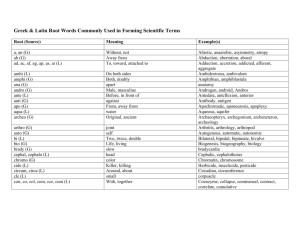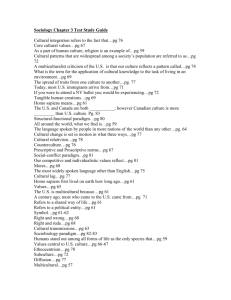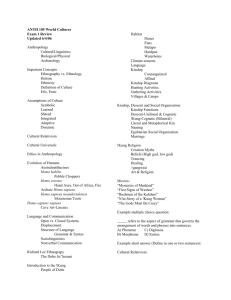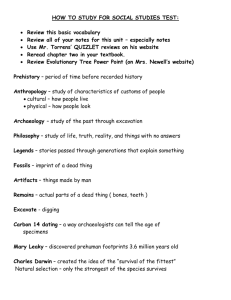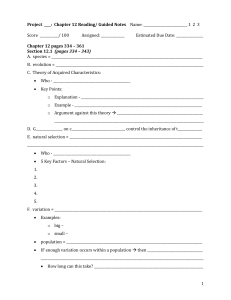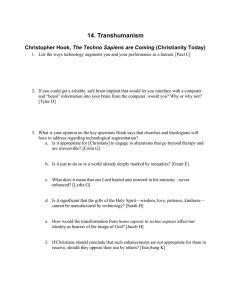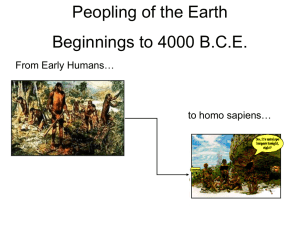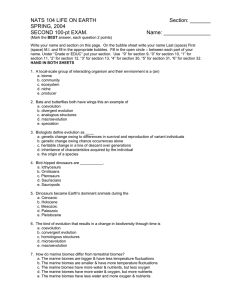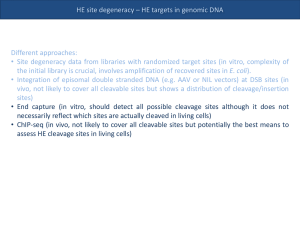ss grade 7 unit 2 lesson 5 PPT (1)
advertisement
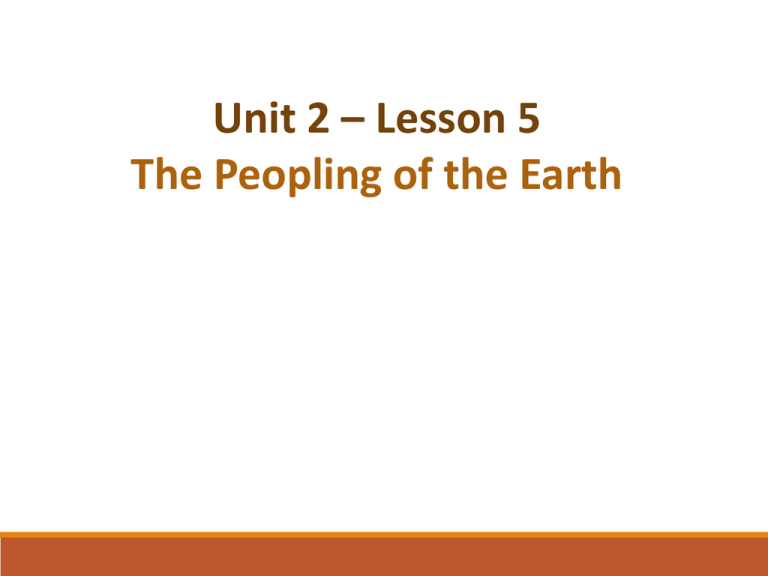
Unit 2 – Lesson 5 The Peopling of the Earth Reviewing What We Have Learned… Homo sapiens Between 200,000 and about 100,000 years ago, people who were both anatomically and genetically “like us” emerged in eastern and southern Africa. This is a reconstructed Homo sapiens skull, found in Israel. It has been dated to about 90,000 years ago. Locations of Earliest Human Remains From their African homeland, Homo sapiens groups migrated to… …Where? 5 When early humans moved out of Africa, where do you think they went? Migrations of Homo sapiens Europe 40,000 years ago Siberia 40,000 years ago North America 12,000-30,000 years ago Oceania 1600 B.C.E.-500 C.E. Southwest Asia 100,000 years ago Human Origins 200,000-250,000 years ago Australia as many as 60,000 years ago Chile 12,000-13 ,000 years ago Possible coastal routes of human migration Possible landward routes of human migration Migrations in Oceania Why do people move? Work with a partner to complete the T-chart. Which of the push and pull factors we identified might have caused early humans to move out of Africa? To find food To find food To escape weather patterns To find food To escape weather patterns To find space for a growing population taiga tundra alpine forest steppe grasslands deciduous forest tropical rainforest savanna desert steppe grasslands deciduous forest taiga tundra alpine forest Biomes Map Biomes Map That’s amazing! Why were modern humans able to move into so many different environments? After all, no other large animals had spread so widely! So what was so special about us? Language! Homo sapiens had language ◦ so they could exchange complex ideas with each other. ◦ and they could store and add to the ideas of previous generations. Because they swapped ideas, they kept finding ◦ new ways of doing things. New Ideas ◦ new ways of living. Language Shared Ideas Learning Language made collective learning possible. The stores of knowledge and skills humans built up are called “culture.” No other animal can store and accumulate knowledge and skills in this way. We call this ability “collective learning.” It is what human history is about! It is what makes us special! Video Online Activity http://www.phschool.com/atschool/california/webcodes/history_interactive/mwp1013/common_player.html Lesson Summary • Humans were able to move out of their original habitat while other species did not. • Human migration over the planet took thousands and thousands of years. • As humans migrated, they learned to live in more varied environments such as deserts and dense forests. • Humans migrated to new biomes to find food, escape weather patterns, and find space for a growing population. • Language might have developed in Africa, anywhere between 50,000 and 100,000 years ago. As humans migrated and moved, language likely became more complex and helped people solve new problems.



